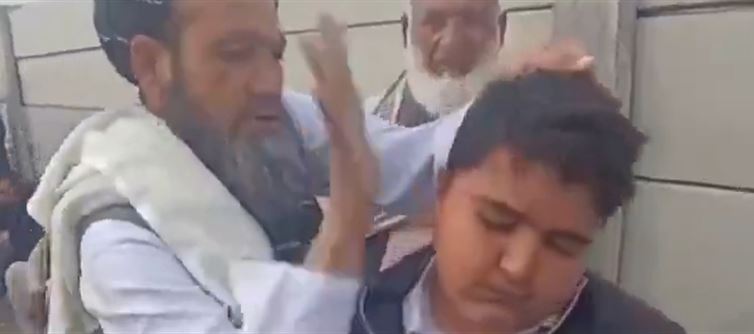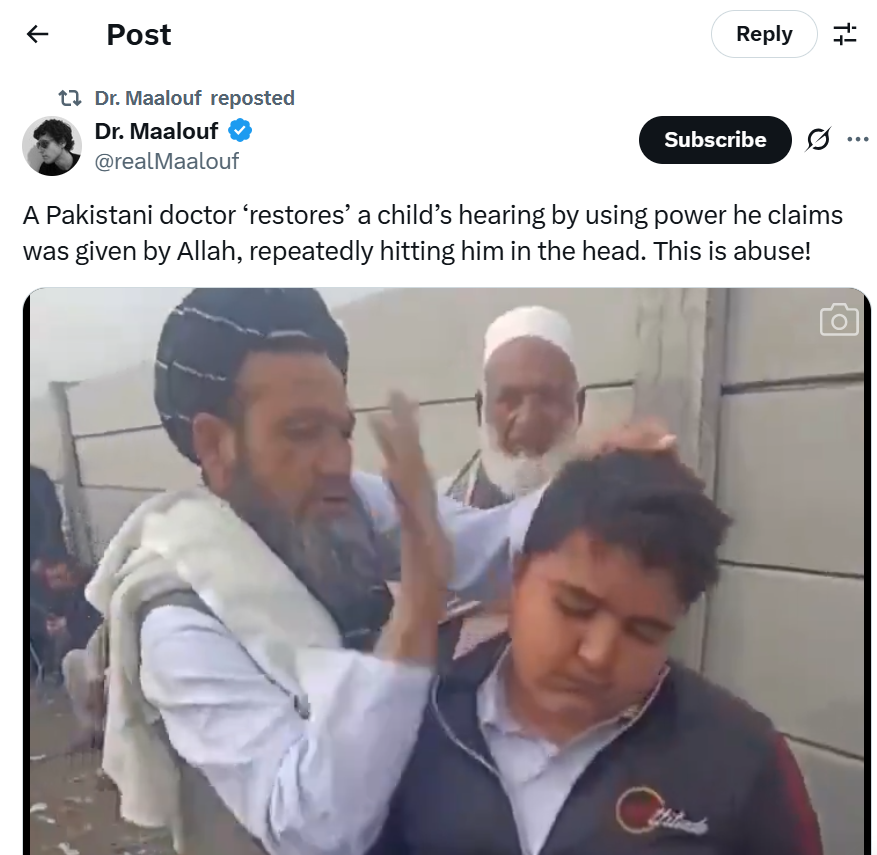
Faith healing, often rooted in religious beliefs, is a prevalent practice in many parts of pakistan, particularly in rural areas where access to modern healthcare is limited. Practitioners, sometimes referred to as "pirs" or "mullahs," claim to possess supernatural powers granted by god (Allah) to cure ailments ranging from physical disabilities to mental illnesses. These practices can include chanting, laying on of hands, and, as depicted in the video, physical interventions like striking or slapping.
 The specific claim of restoring hearing through such methods is not uncommon. In regions where medical infrastructure is sparse, families may turn to faith healers out of desperation, believing that conventional medicine has failed them. However, the video raises serious ethical and medical concerns, as the act of repeatedly hitting a child’s head is not only ineffective but also potentially harmful, risking physical injury and psychological trauma.
The specific claim of restoring hearing through such methods is not uncommon. In regions where medical infrastructure is sparse, families may turn to faith healers out of desperation, believing that conventional medicine has failed them. However, the video raises serious ethical and medical concerns, as the act of repeatedly hitting a child’s head is not only ineffective but also potentially harmful, risking physical injury and psychological trauma.The tweet has elicited a range of responses. Some users condemn the practice as abuse, aligning with Dr. Maalouf’s perspective, while others defend it as a cultural or religious tradition. Critics argue that such practices exploit vulnerable populations, particularly children, and perpetuate misinformation about health and medicine. Supporters, however, may view it as a legitimate expression of faith, despite lacking a scientific basis.
The incident also highlights broader issues in pakistan regarding healthcare access and education. According to the World health Organization (WHO), hearing impairment is a significant concern in pakistan, with a prevalence of 7.9% among school children in some regions. Late identification and lack of neonatal screening exacerbate the problem, making families more susceptible to unverified remedies. The Society for the Protection of the Rights of the Child (SPARC) has identified corporal punishment, including in the guise of discipline or healing, as a pervasive form of violence against children, often culturally approved and underreported.
Legally, pakistan has made strides towards prohibiting corporal punishment, with the Juvenile Justice System Act (JJSA) stating that no child may be subjected to such treatment while in custody. However, these laws do not always extend to private or religious settings, where traditional practices may override legal protections. Ethically, the video challenges the boundaries of consent, especially when involving minors, and the responsibility of adults to ensure the safety and well-being of children.




 click and follow Indiaherald WhatsApp channel
click and follow Indiaherald WhatsApp channel